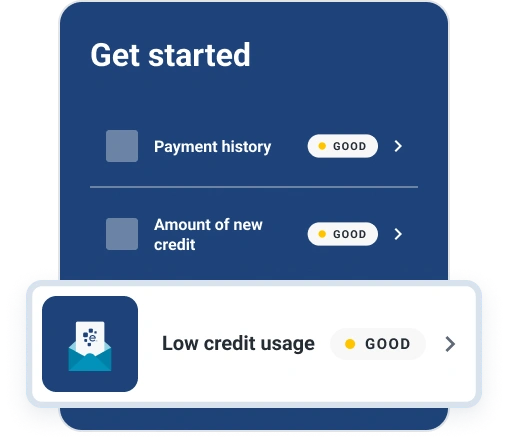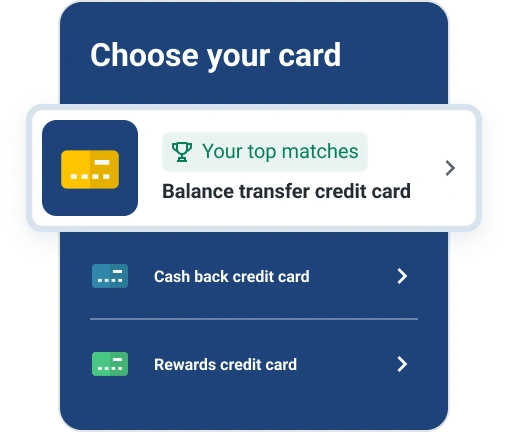At Experian, one of our priorities is consumer credit and finance education. This post may contain links and references to one or more of our partners, but we provide an objective view to help you make the best decisions. For more information, see our Editorial Policy.
In this article:
A balance transfer annual percentage rate (APR) is the interest rate you pay on a balance you've moved from one credit card to another. While some cards offer introductory 0% APR promotions on balance transfers, it's also important to know what your costs will be once that promotional period is over.
What Is Balance Transfer APR?
When you transfer a balance from one credit card to another, your debt will be subject to the new card's balance transfer APR. While balance transfers are treated separately from purchases, the balance transfer APR and the purchase APR are often the same.
In some cases, specialized balance transfer credit cards offer a promotional period, during which your balance transfer APR is low or even 0%. Some cards may offer such promotions to existing cardholders.
Save with an intro 0% APR balance transfer
How a Balance Transfer APR Works
If you apply for a balance transfer credit card with a 0% APR promotion, you may be able to pay down your balance interest-free for anywhere between 12 and 21 months, depending on which card you choose.
This could translate to hundreds of dollars in interest savings as you work to pay down your debt. After that, any remaining balance will be subject to the card's regular balance transfer APR, which will be based on your creditworthiness.
However, there are a few things to keep in mind when considering a balance transfer offer:
- Transfer window: Some cards require you to submit your balance transfer request within a set period after you're approved. If you don't submit a balance transfer request in time, you may no longer be eligible for the promotion. For example, your card issuer may give you 45 days or four months to make the transfer request.
- Purchases: If your card doesn't also offer a 0% APR promotion on purchases, any purchase you make may be subject to interest from the date of the transaction until you've paid your entire balance—including the balance transfer—in full. In other words, you won't qualify for the traditional grace period on purchases.
- Balance transfer fee: Credit cards assess a fee on transferred balances, typically ranging from 3% to 5% of the transfer amount. This fee will be added to your new balance.
- Minimum payments: If you don't make the minimum payment on your credit card, your card issuer may revoke your 0% APR promotion, and you'll start paying the card's ongoing balance transfer APR on the debt.
- Restrictions: You can typically transfer up to the amount of your new card's credit limit, but some card issuers may set other limits.
Can a Balance Transfer Affect My Credit?
There are a few different ways taking advantage of a balance transfer offer can impact your credit.
Applying for the Card
When you apply for a new credit card, the card issuer will typically run a hard inquiry on one or more of your credit reports.
One inquiry typically won't impact your credit score by much, but if you apply for multiple cards within a short period of time, it could have a compounding negative effect.
Opening a New Account
When you open a new credit account, it'll reduce the average age of your accounts, which impacts the length of your credit history.
Again, the effect may only be mild and temporary if you're just opening one account, but it could be more drastic if you already have a short credit history or you're opening multiple accounts in a short period.
Increasing Your Amount of Available Credit
When you open a new credit card, your total available credit increases, which can positively influence your credit utilization rate—one of the more influential factors in your FICO® Score☉ .
Additionally, the credit limit on the new card relative to the original card could help or hurt your score. For example, if you're moving $5,000 from a card with a $7,000 credit limit to a card with a $10,000 credit limit, your utilization rate will decrease, helping your credit score.
However, if the new card's limit is $6,000, the higher utilization rate could hurt your credit. In either case, paying down your balance can have a long-term positive impact on your credit score.
Should I Do a Balance Transfer?
If you're struggling with high-interest credit card debt, a balance transfer credit card could provide some relief. However, there are some potential drawbacks to consider before you proceed. Here's what to keep in mind.
Pros
- Interest savings: Depending on how much debt you have and how quickly you can pay it off, you could end up saving hundreds of dollars on interest.
- Faster payoff: Without the burden of interest charges, you could pay off your credit card debt more quickly and with a lower monthly payment than if you were to stick with your existing credit card.
- Simplify multiple balances: If you have balances on multiple credit cards, you may be able to consolidate all of them into a single balance and monthly payment, streamlining your debt payoff strategy.
Cons
- No guarantee of approval: Most balance transfer credit cards require you to have good or excellent credit to get approved, making the option inaccessible for people with less-than-stellar credit scores.
- Balance transfer fee: This upfront fee eats into your savings, and depending on how much debt you transfer and how long it takes to pay it off, the costs could outweigh the savings. You can use an online balance transfer calculator to evaluate whether the savings are worth the fee for your situation.
- Not a long-term solution: A balance transfer promotion can help you get your financial situation back on track, but it doesn't resolve the underlying issues that put you in debt in the first place. In fact, moving a balance to a new card could tempt you to rack up a new balance on the original card. If you're considering this option, it's crucial that you have a plan to prevent accumulating more debt.
How to Do a Balance Transfer
The process for transferring a balance from one credit card to another can vary depending on which card issuer you choose. However, you'll generally have the following options:
During the Application Process
Some card issuers may allow you to request a transfer before you're even approved for the card. With this option, you'll typically provide your card numbers and desired transfer amounts.
Keep in mind, though, that the card issuer will typically wait up to two weeks after your account is opened to process the request. Also, because you don't yet know your credit limit, your request may be adjusted based on what you're approved for.
By Phone
Once you receive your card in the mail, you can call the number on the back and submit your request through a customer support representative. You'll just need to provide your account numbers and the amount you want to transfer.
Online
Some credit card issuers may allow you to submit a balance transfer request through your online account instead of over the phone.
If this option is available to you, you may be able to provide the account and balance information online, request a balance transfer check, which you can use to send a payment to your original card issuer, or even get the money transferred to your bank account.
Learn more: How to Do a Balance Transfer in 5 Steps
Compare Balance Transfer Offers to Maximize Your Savings
If you're considering a balance transfer credit card, it's important to look at a variety of factors, including the length of a 0% APR promotion and whether it applies to both balance transfers and purchases. Some balance transfer cards also offer rewards, but you may need to choose between a rewards card with a shorter promotional period and a no-rewards card with a longer promotion.
Experian can help you research and compare balance transfer credit cards based on your credit profile to help you find the best fit.




